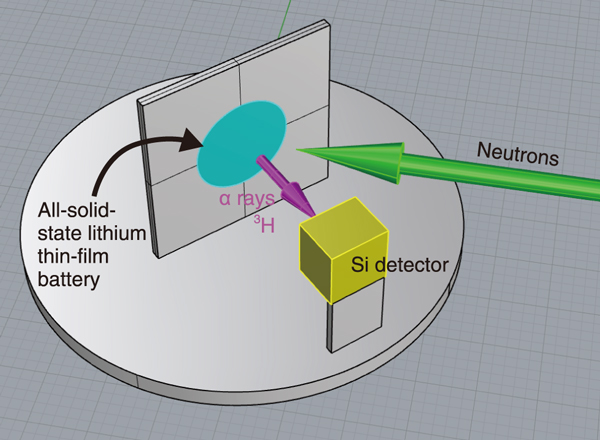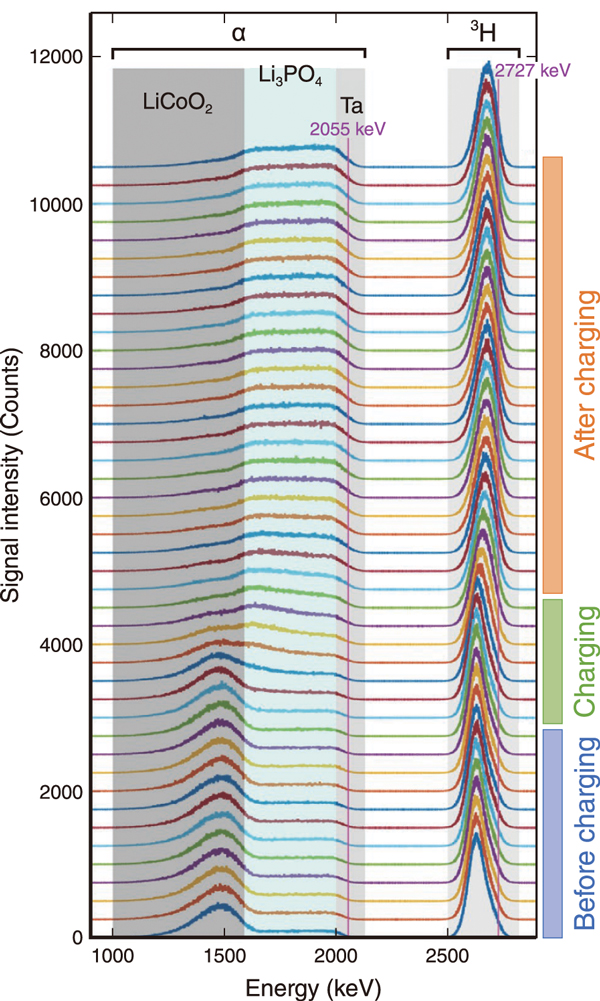
Fig.1 Overview of neutron depth profiling

Fig.2 Energy spectra of neutron depth profiling
Lithium-ion batteries (LIBs) can store large amounts of electricity and are used in a variety of devices such as smartphones. However, they use organic solvents as the electrolyte, which poses the risk of ignition. In contrast, all-solid-state LIBs are batteries with a solid electrolyte. They are expected to become the next generation of batteries. Compared to the conventional lithium-ion batteries, all-solid-state lithium-ion batteries offer the benefits of higher energy density, safety, and durability, but this technology is still in its infancy and has not yet reached mass production.
To improve the performance of all-solid-state LIBs, it is important to clarify the migration mechanism of lithium ions inside the LIB. However, visualizing this migration process is a challenge. In particular, it has been difficult to track the movement of lithium ions in real time during charging and discharging.
Therefore, we challenged ourselves to observe the lithium ions in all-solid-state LIBs by neutron depth profiling. Lithium has two isotopes with different weights (6Li and 7Li); 6Li reacts very well with neutrons. When neutrons react with 6Li in the battery, α rays and tritium (3H) are emitted through a thermal neutron-induced nuclear reaction (Fig.1). By measuring the energy spectrum of the generated α-particles and tritium, we can visualize the depth from the surface of the reacting lithium from the energy loss, since the energy is lost depending on the depth at which they were generated.
Experiments were conducted using the prompt γ-ray analyzer (PGA) installed in the research reactor JRR-3. In this study, all-solid-state LIB samples were prepared using a 6Li-enriched cathode (lithium cobaltate) to increase the analytical sensitivity. In nature, 6Li comprises only 7.5%, but in our samples, it was enriched to 95.4%. Lithium phosphate was used as the solid electrolyte, and tantalum as the negative electrode. The battery sample was placed in a vacuum container and irradiated with thermal neutrons for neutron depth profiling. Through this experiment, we succeeded, for the first time in the world, in dynamically capturing the lithium-ion migration process in all-solid-state LIBs while actually charging the battery (Fig.2). A comparison of the experimental results with simulations revealed that the lithium ions in the solid electrolyte migrate to fill vacancies and that they do not migrate throughout the entire area of the solid electrolyte but only in specific areas within the solid electrolyte.
The development of technology to visualize the behavior of lithium ions in all-solid-state LIBs during charging and discharging is expected to advance the development of such batteries in the future.
(Takahito Osawa)